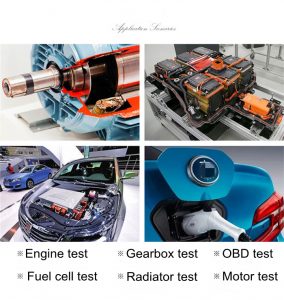Introduction to mixed solution of glycol chilling systems (glycol chillers)
Glycol chillers are industrial refrigeration systems that use a type of antifreeze called glycol, mixed with water, to lower the freezing point in the application of the chilling system.
Glycol is a class of organic compounds that belong to the alcohol family. When mixed with water and pumped through the pipes of a chilling system, glycol serves to slow the rate of freezing. It helps maintain temperature consistency in the application. Some glycol products also work to inhibit corrosion and bacterial growth within the pipes of the chilling system.
Glycol comes in two varieties that should never be mixed together: ethylene glycol and propylene glycol. Both types offer the same relative level of freeze protection. Both also help to guard against corrosion. Some grades of both types of glycol also help to prevent the growth of algae and bacteria within the chiller.
Ethylene glycol is a moderately toxic chemical that has a sweet taste and can be harmful if swallowed. For this reason, it should not be used in potable water or food processing systems when leakage is a possibility. Ethylene glycol has more widespread use due to its lower purchase price. Industrial applications like ice rinks and factories requiring large volumes of the coolant find this to be the most economical choice of glycol.
Mixing Water with Glycol in Your Industrial Refrigeration System
Although you should never mix glycol types there is something that should always be added: water. As mentioned, glycol must be mixed with water to function properly. The type and amount of water to use are key factors to consider.
Ratio of Water to Glycol to Use
Calculating the proper ratio of glycol to water in your chilling system depends on the coldest temperature that the glycol solution will reach during operation. If a chilling system is used indoors where there is no chance of freezing, the amount of glycol needed would be significantly less than required by a glycol chiller used outdoors where temperatures are prone to drop below freezing. Also, if an application requires a very low temperature to operate it should use a glycol mixture similar to that of an outdoor system. In a chilling system, this temperature is normally the saturated suction temperature in the evaporator, and normally this temperature is 10°F below the chiller set point temperature. Using the proper ratio of glycol and water in your chilling system is very important. Adding too much to your chiller system will cause it to become inefficient. However, not enough glycol could cause the system to freeze up, potentially bursting pipes or even rupturing the chiller evaporator.
To learn more about how a glycol chiller works, contact LNEYA: sales@lneya.com.
Похожие рекомендации
-
How to reduce the failure rate of the new energy motor test water cooling system?
1016New energy motor test water cooling system needs to pay attention to use during use, no matter how good equipment is used for a long time, some problems will occur more or less. So, how can we minimize the failure rate of the equipment during use?...
Посмотреть детали -
-
Why do semiconductor packaging and testing sorting machines need to use chillers?
1226In the semiconductor packaging testing process, especially in the temperature control process of the sorting machine (test probe station), the use of chillers is mainly based on the following reasons: Temperature stability and accuracy...
Посмотреть детали -
Описание функций испытательного бокса для влажного теплового шока с чередованием высоких и низких температур
933Потребителям необходимо обратить внимание на производительность камеры для испытаний на влажный тепловой шок с чередованием высоких и низких температур. Испытательная камера LNEYA ближе к потребностям компании-покупателя. Высокая и низкая температура переменного теплового и...
Посмотреть детали
 LNEYA Промышленные чиллеры Производитель Поставщик
LNEYA Промышленные чиллеры Производитель Поставщик













